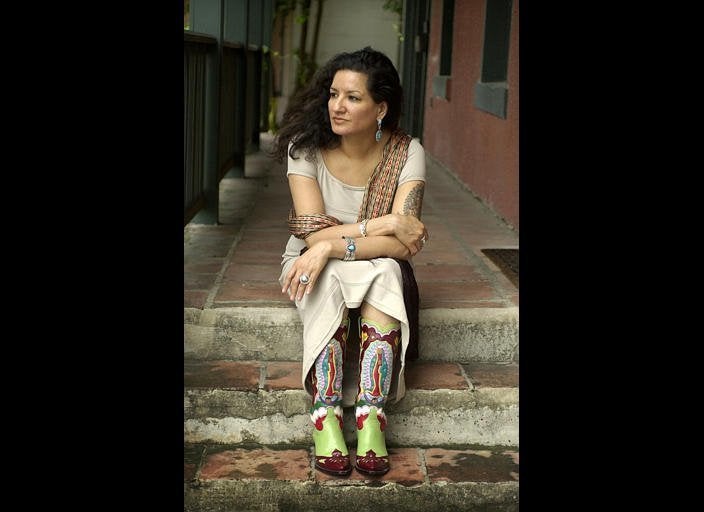As I have written elsewhere (VOXXI, November 19, 2012), Don Pedro Menendez de Aviles (1519-1574), from Asturias, was the founder of the city of St. Agustine, La Florida, in 1565, with a group of soldiers, colonists and priests. On September 8, 1565, official Thanksgiving was given. A mass was celebrated and a feast followed. This day can be considered as the first official Thanksgiving Day in U.S. territory, as Dr. Michael Gannon, University of Florida, assures us.
Thanksgiving was, and supposedly is, a religious act and, as we all know, religion and gastronomy go hand in hand. People rejoice spiritually, offer tokens of gratitude to the Almighty, acknowledge His help and guidance, and then relax and make merry while refreshing and nourishing their mortal bodies. In other words: Thanksgiving is followed by eating and drinking. This is, as I explained, a universal tradition predating the discovery of America, practiced by different cultures and different religions. Almost the same everywhere, except the food partaken at these celebrations of thanks.
The North-American tradition of devouring the fowl known as turkey, is very fitting because this bird is indigenous of the Americas and was introduced into Europe by the Spaniards. It seems that over 45 million farm-bred turkeys are served for Thanksgiving dinner in the U.S. on the fourth Thursday of November of each year. The bird belongs to the New World. The British, being the way they are, thought that this animal came from Turkey, thus its name in English.
For centuries turkey made up the traditional main Christmas course throughout Europe, until the affluent society cast it out as unfit for elegant culinary tastes.
The first Thanksgiving in U.S. territory?
After the Mass, offered as an act of thanksgiving by don Pedro Menendez de Aviles, what was eaten at the feast that followed, in what can be considered the first such celebration in U.S. territory?
Dr. Marian Horvat (“The Oldest City and the First Thanksgiving”) tells us that the feast was shared by the Spaniards and the Timucuan Indians who brought edibles such as venison, corn, beans, squash, oysters, clams, fruit, and, of course, plenty of turkeys.
Quail, hare, rabbit, chicken were probably also supplied by the Timucuan Indians, who most certainly brought tortillas, frijoles, corn, squash and legumes as well as fruits.
What did Spaniards contribute to the bread-breaking get-together? Probably cocido, a stew made with pork, garbanzo beans, chickpeas, and onions, along with biscuits, olive oil and red wine. Surely, salted pork and cheese spread was also present. Let us remember that Spaniards introduced into the newly discovered territories: horses, cattle, pigs, sheep, goats and chickens. Condiments were also brought over such as olive oil, cinnamon, parsley, coriander, oregano and black pepper, and also nuts and grains such as almonds, rice, wheat and barley. Gout was widespread in Europe at that time because of the excessive intake of meats and wines, forever present at festivities. Charles I and Phillip II both suffered from this crippling illness.
A mixture of European and American ingredients, the best of both worlds, coincided on U.S. soil at the first Thanksgiving dinner on September 8, 1565, and which centuries later would turn into what today can be termed Hispanic cuisine.
Our 2024 Coverage Needs You
It's Another Trump-Biden Showdown — And We Need Your Help
The Future Of Democracy Is At Stake
Our 2024 Coverage Needs You
Your Loyalty Means The World To Us
As Americans head to the polls in 2024, the very future of our country is at stake. At HuffPost, we believe that a free press is critical to creating well-informed voters. That's why our journalism is free for everyone, even though other newsrooms retreat behind expensive paywalls.
Our journalists will continue to cover the twists and turns during this historic presidential election. With your help, we'll bring you hard-hitting investigations, well-researched analysis and timely takes you can't find elsewhere. Reporting in this current political climate is a responsibility we do not take lightly, and we thank you for your support.
Contribute as little as $2 to keep our news free for all.
Can't afford to donate? Support HuffPost by creating a free account and log in while you read.
The 2024 election is heating up, and women's rights, health care, voting rights, and the very future of democracy are all at stake. Donald Trump will face Joe Biden in the most consequential vote of our time. And HuffPost will be there, covering every twist and turn. America's future hangs in the balance. Would you consider contributing to support our journalism and keep it free for all during this critical season?
HuffPost believes news should be accessible to everyone, regardless of their ability to pay for it. We rely on readers like you to help fund our work. Any contribution you can make — even as little as $2 — goes directly toward supporting the impactful journalism that we will continue to produce this year. Thank you for being part of our story.
Can't afford to donate? Support HuffPost by creating a free account and log in while you read.
It's official: Donald Trump will face Joe Biden this fall in the presidential election. As we face the most consequential presidential election of our time, HuffPost is committed to bringing you up-to-date, accurate news about the 2024 race. While other outlets have retreated behind paywalls, you can trust our news will stay free.
But we can't do it without your help. Reader funding is one of the key ways we support our newsroom. Would you consider making a donation to help fund our news during this critical time? Your contributions are vital to supporting a free press.
Contribute as little as $2 to keep our journalism free and accessible to all.
Can't afford to donate? Support HuffPost by creating a free account and log in while you read.
As Americans head to the polls in 2024, the very future of our country is at stake. At HuffPost, we believe that a free press is critical to creating well-informed voters. That's why our journalism is free for everyone, even though other newsrooms retreat behind expensive paywalls.
Our journalists will continue to cover the twists and turns during this historic presidential election. With your help, we'll bring you hard-hitting investigations, well-researched analysis and timely takes you can't find elsewhere. Reporting in this current political climate is a responsibility we do not take lightly, and we thank you for your support.
Contribute as little as $2 to keep our news free for all.
Can't afford to donate? Support HuffPost by creating a free account and log in while you read.
Dear HuffPost Reader
Thank you for your past contribution to HuffPost. We are sincerely grateful for readers like you who help us ensure that we can keep our journalism free for everyone.
The stakes are high this year, and our 2024 coverage could use continued support. Would you consider becoming a regular HuffPost contributor?
Dear HuffPost Reader
Thank you for your past contribution to HuffPost. We are sincerely grateful for readers like you who help us ensure that we can keep our journalism free for everyone.
The stakes are high this year, and our 2024 coverage could use continued support. If circumstances have changed since you last contributed, we hope you'll consider contributing to HuffPost once more.
Already contributed? Log in to hide these messages.

